
One year has passed since the exodus of practically the entire population of Nagorno-Karabakh. OC Media reconnected with refugees interviewed in the immediate aftermath to hear how they are a year on.
On 19 September 2023, Azerbaijan launched its last large-scale military offensive on Nagorno-Karabakh, calling it an ‘anti-terrorist operation’. Days later, the region came under the full control of Azerbaijan.
Armenians living in the region had not expected such an outcome, continuing to wait for a ‘happy end’ throughout the almost ten-month siege that preceded the offensive.
Just one week after the September offensive, however, almost the entire Armenian population of Nagorno-Karabakh, over 100,000 people, fled their homes. According to the former Nagorno-Karabakh ombudsman, only 14 Armenians still remained in Nagorno-Karabakh at the beginning of September 2024.
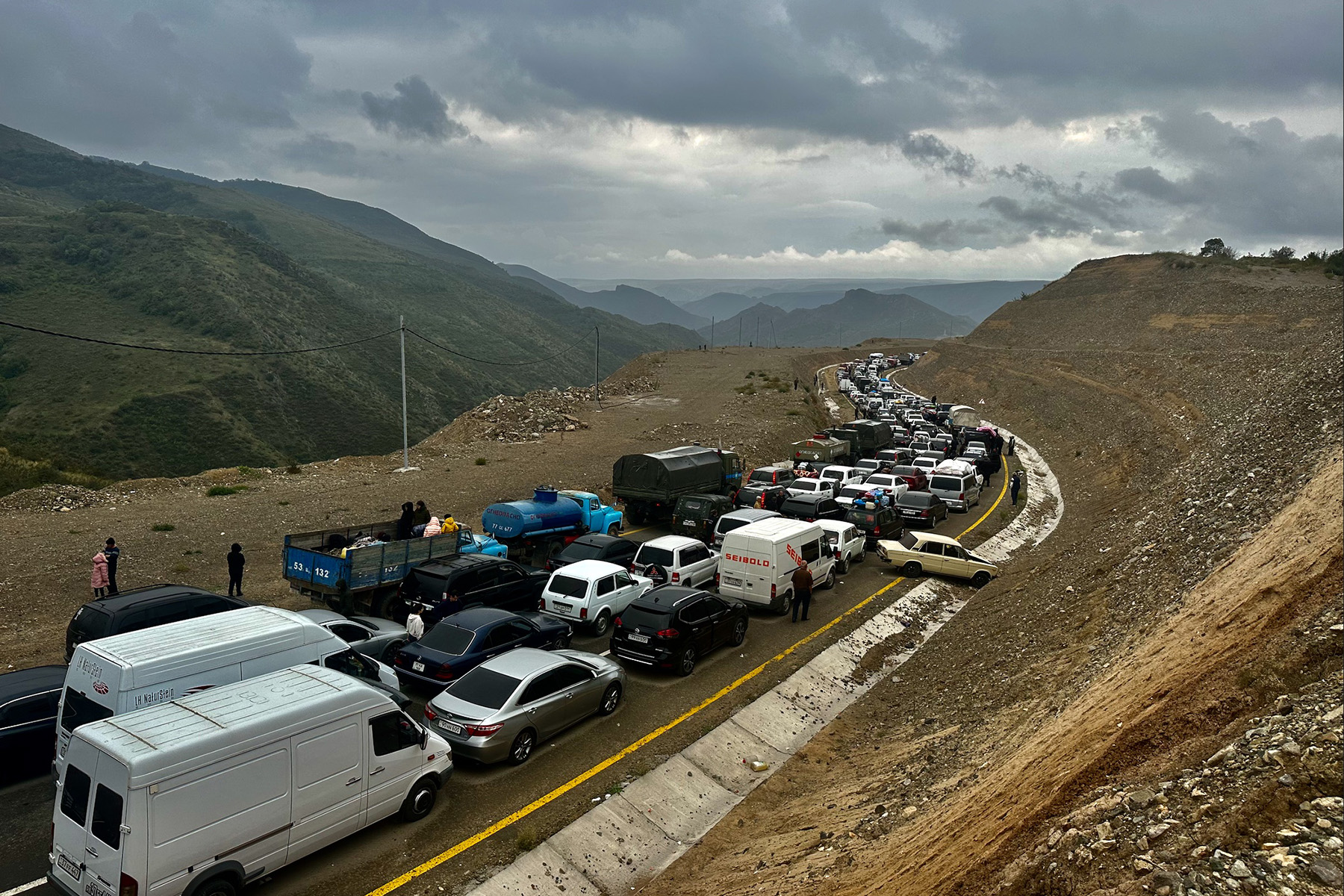
Since their flight, the refugees, scattered all across Armenia, have struggled to adapt, with many expressing discontent with the Armenian government’s handling of their influx.
‘I knew that we were going to return’
Displaced from her home in Drmbon (Heyvali), Sona Nahapetyan, 28, found refuge in Charentsavan, in Kotayk Province, which is where she originally wanted to settle when she spoke to OC Media last year. She met us in her one-bedroom flat — a space that is insufficient for her family of six — which costs her ֏100,000 ($260) per month.
[Read more: The last bus out of Nagorno-Karabakh]
‘I came to Charentsavan — my birthplace, but I have a feeling that I want to go back [to Drmbon] again. My thoughts are there,’ says Sona. She moved to Nagorno-Karabakh at the age of 16, when she married, and says that is where she came of age.
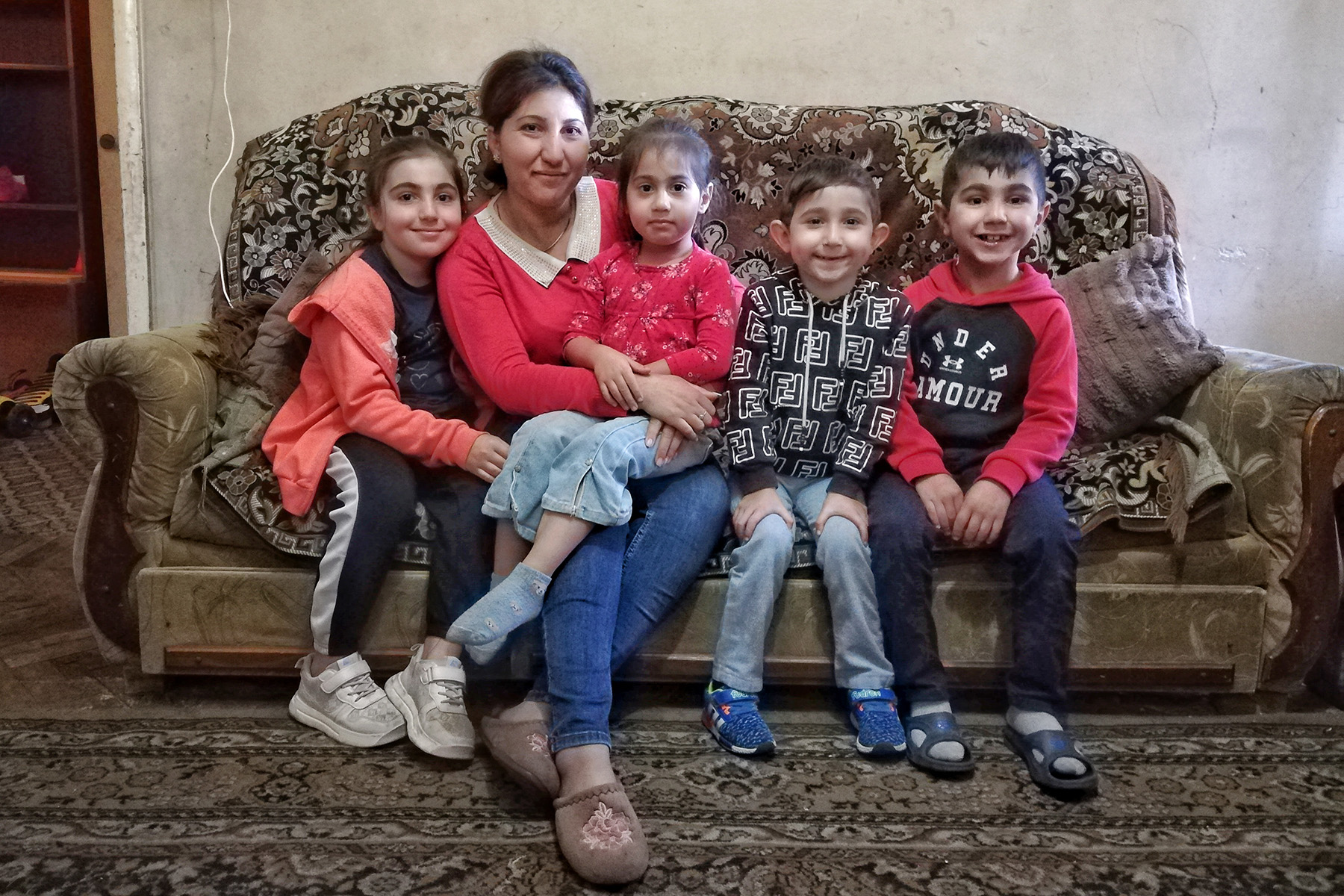
‘It was cruel,’ says Sona, reflecting on the last year. She misses everything from home, and says that she and her family have not yet overcome the shock of the war.
‘Even now, when there is thunder, my eldest daughter is afraid,’ she says, adding that she found her daughter in tears during a storm one night, something she had never done before the autumn of 2023.
Sona and her children did not witness the 2020 Second Nagorno-Karabakh War, as they had left to participate in her brother’s wedding in Armenia, which took place one day before the war broke out.
However, three years later, she and her children lived through the blockade, the war, and the mass displacement.
Evacuated early in the morning, she failed to take anything with her aside from bread and cheese to feed her children.
‘The children entered the garden, and there were small peppers which they plucked. I told them not to do that so that [the peppers] would grow for them to eat later. I knew that we were going to return,’ says Sona, adding that she even made the bed so that the home would remain tidy for their return.
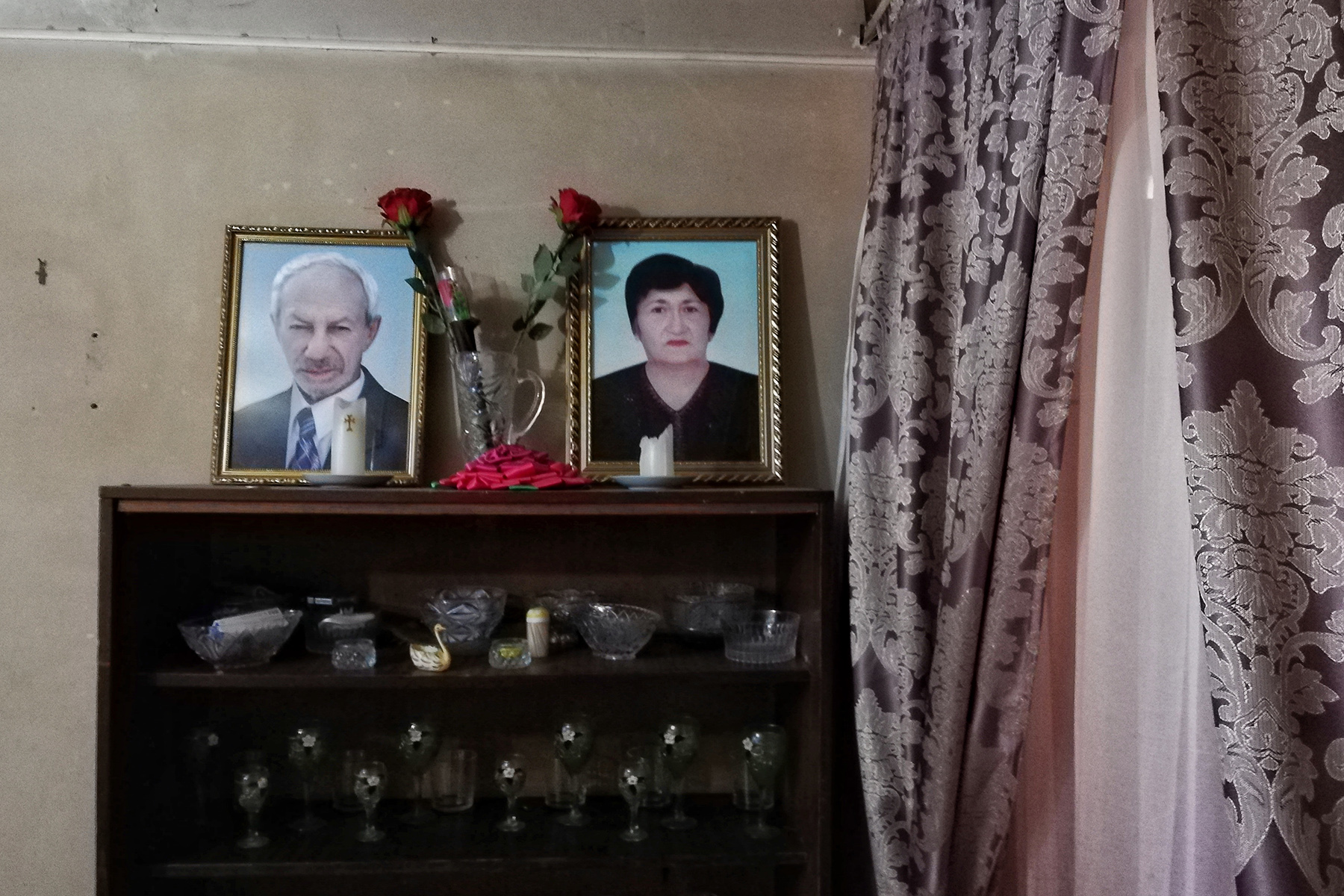
The family’s future is now uncertain. They are looking for a bigger place to rent, but have many questions about the state housing programme created by the Armenian government earlier this year. They hope to hear examples of success with the programme, which would give them the confidence to apply.
Two strokes and a memory stuck in the past
Nune Sargsyan and her 75-year-old mother, Nurvard, are originally from Chartar, in the Martuni (Khojavand) region of Nagorno-Karabakh. Over the past year, they have settled in Hrazdan, also in Kotayk, where the rest of their extended family lives. This has allowed them to stay connected.
During the mass exodus, Nurvard suffered a stroke; she has experienced two more strokes since then. She can hardly walk, relying on her daughter for support. Her memory has also been affected.
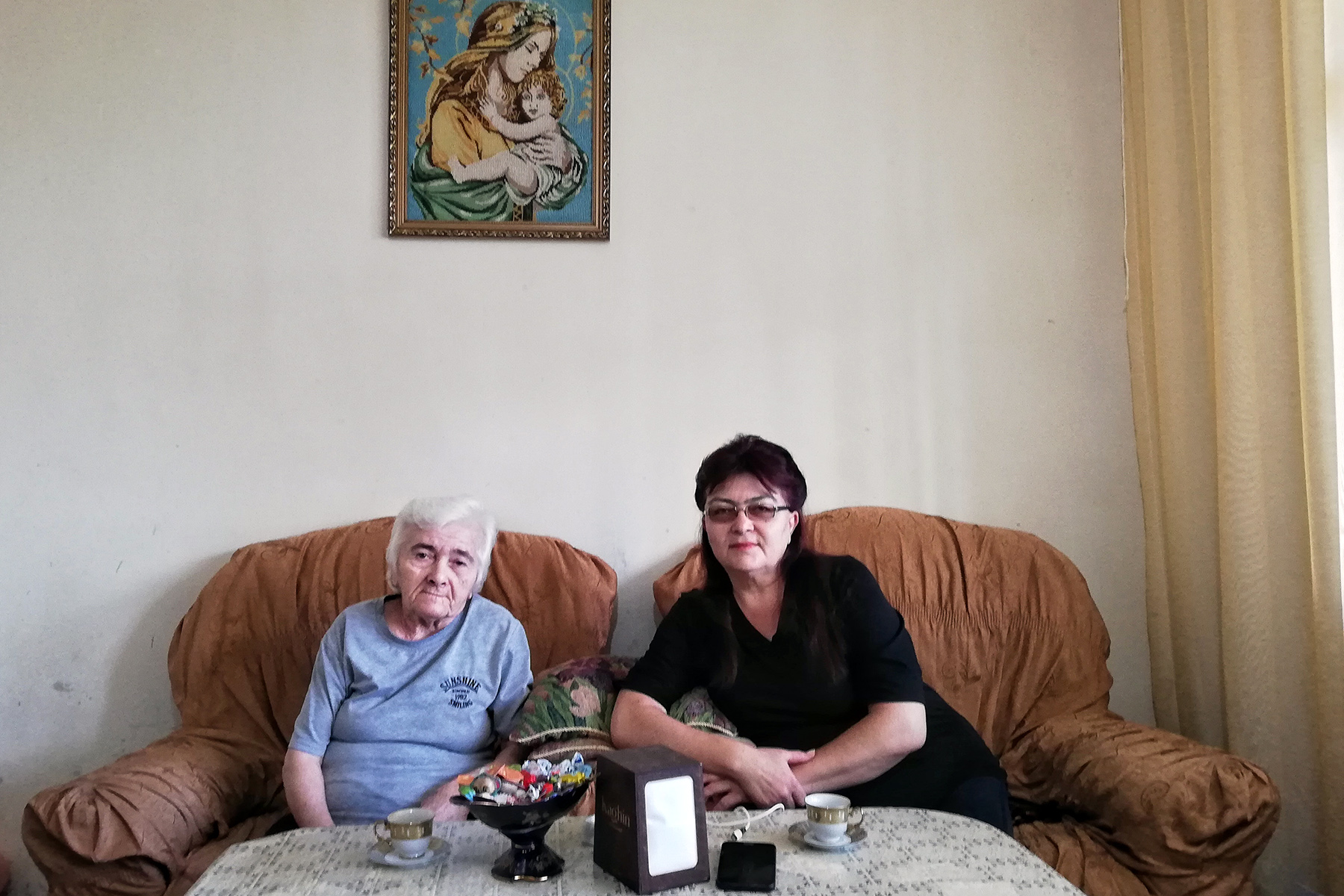
‘As soon as she finishes eating, she says, “Get up, let’s go home” ’, says Nune, 55. She says that her mother gave up meat after they moved to Armenia, claiming that it tasted too different.
‘She says she wants chickens from our village. Should I go to the village and tell Mehriban to give us our chickens?’, she says, referring to Azerbaijani Vice President and First Lady, Mehriban Aliyeva.
One of the things Nune misses the most from Chartar is the water she would collect every other day from the local springs. She says the vegetables and fruits that grew there were also full of flavour.
In Hrazdan, they live in the house of Nune’s nephew, who has moved with his own family to a rented flat in the same town. While they feel comfortable there, they want to have their own place. More significantly, they long to return to their original home, though they do not know how. They hope for a miracle and believe, despite not knowing how, that this could happen.
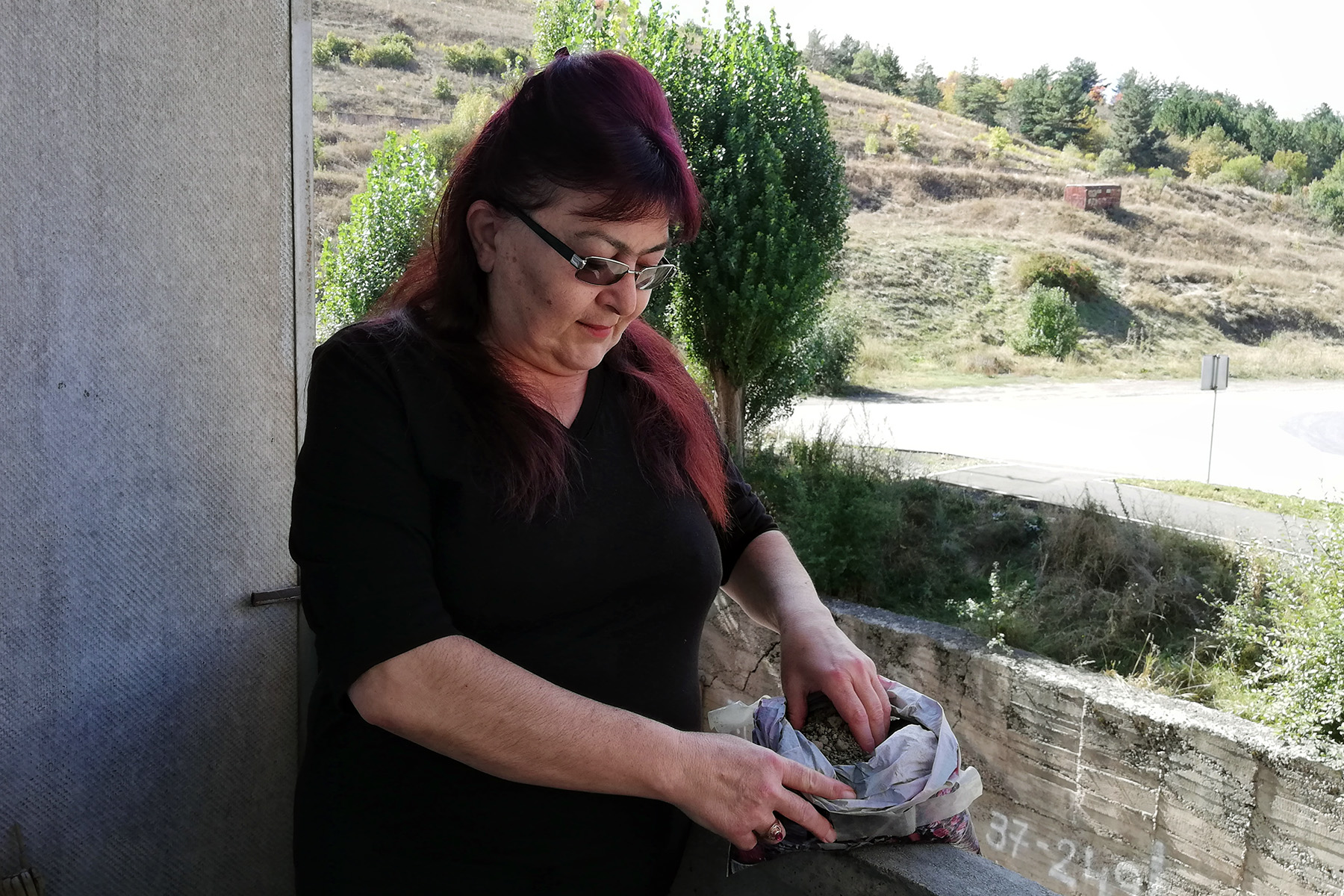
‘I miss Artsakh [Nagorno-Karabakh] in general. We left my father’s grave there’, says Nune, in tears. ‘The cemetery is visible from the road. When leaving, I called to Dedo “I’m sorry I couldn’t come to say goodbye, but we will come again; we will come one day” ’.
On 26 September, they baked their last bread in Chartar with their neighbours, and loaded their belongings into their neighbour Vanik’s a truck, alongside his family’s belongings. Vanik, 39, however, was missing — he had been killed during the attack a week earlier.
Connecting people through bread
Today, Zhingyalov hats, a type of traditional Nagorno-Karabakh flatbread stuffed with various herbs, are baked and sold across Armenia. They are easy to make and to eat on the move. They are also a way for Nagorno-Karabakh Armenians to remain connected to their cuisine and community, and to share this with others.
In the centre of Dilijan, a resort town in northern Armenia, two related families opened a bakery called Zhingyalov hats of Artsakh less than one month after being displaced from Nagorno-Karabakh.
Fellow Nagorno-Karabakh Armenians, as well as Russian emigrants, are their main customers.
‘At first, [Russian customers] used to take one [flatbread], divide it into pieces, and eat it, probably to taste it. Now, they have already gotten used to it. They come to take five or six, and leave satisfied’, says Gayane Harutyunyan, 40.
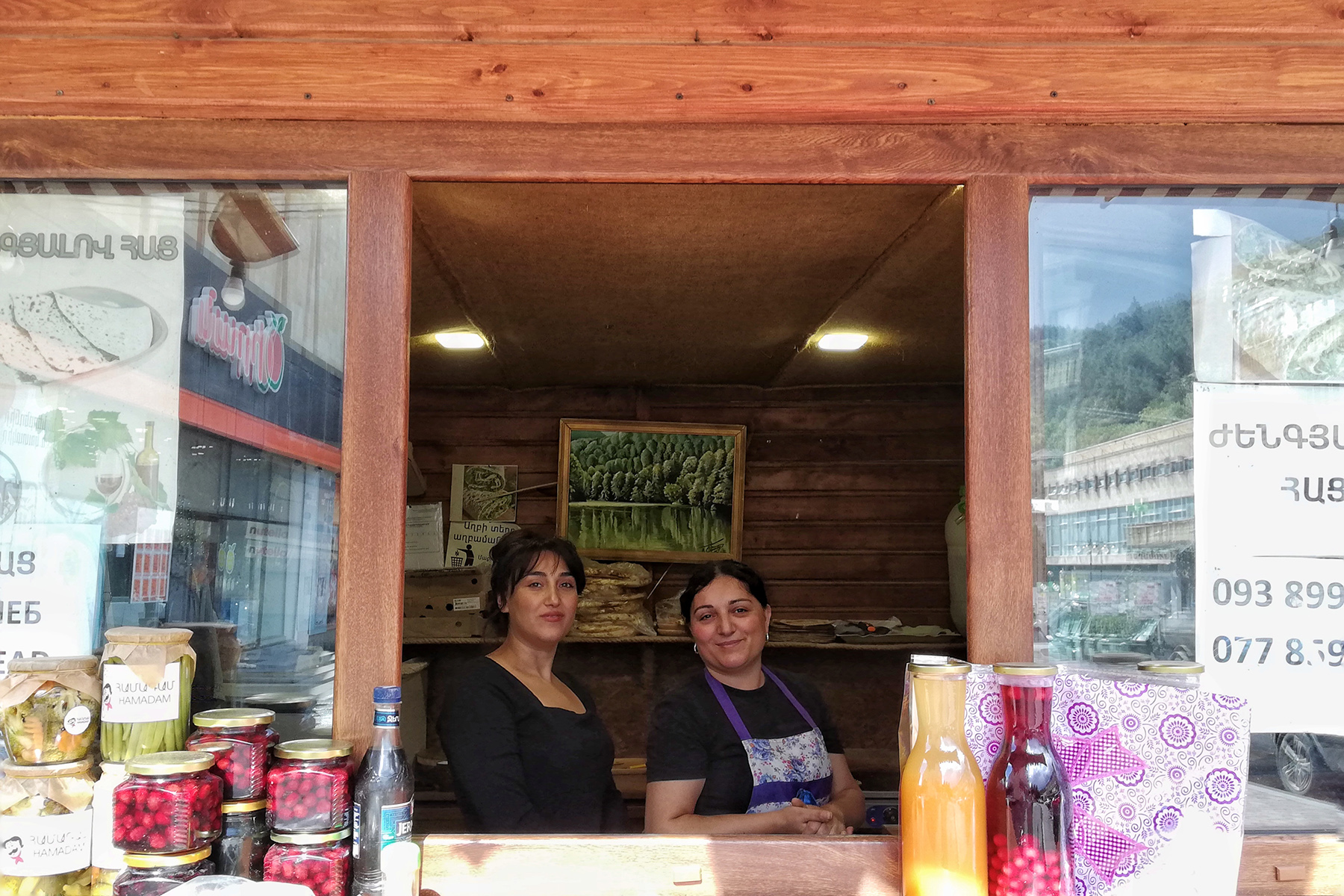
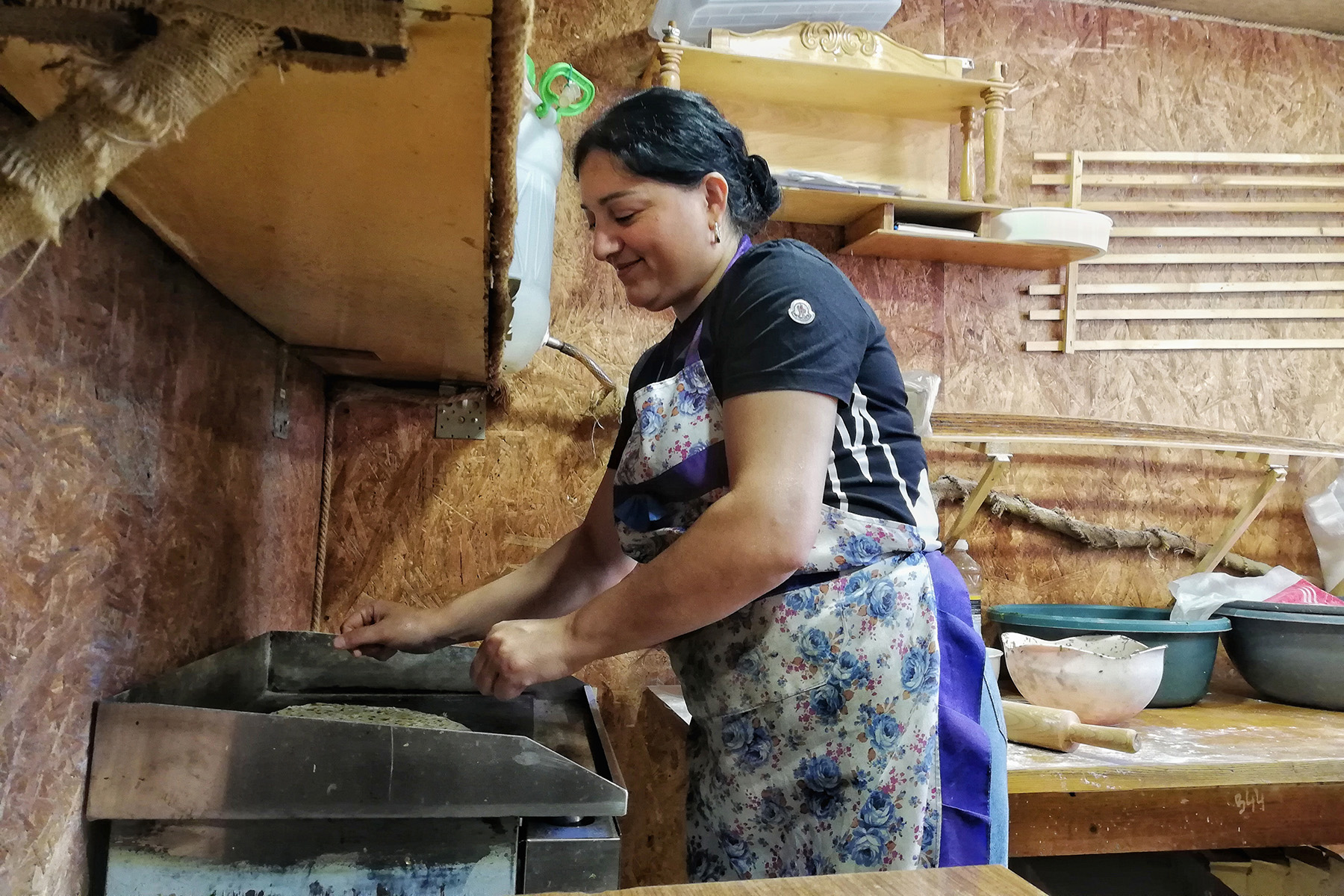
Neither she nor her brother and business partner, Artur, had extensive experience baking the traditional flatbread before opening their business.
They chose to settle in Dilijan because they found refuge there during the 2020 Second Nagorno-Karabakh War. That year, they lost their homes in Shusha (Shushi) and later resettled in Stepanakert.
‘[Dilijan] is similar to our Karabakh, especially to Shushi, with its mountains and nature. People are very kind here. They are similar to our people of Karabakh,’ says Gayane.
Inna Hakobyan, 35, Gayane’s sister-in-law, says that while people in Dilijan are compassionate and supportive, the grief she and her family experienced always weighs on them.
‘The pain always lingers,’ says Inna. ‘I want to delve deeper, but then I distract myself, because it is a sorrow, a black corner in your heart […] it seems to me that it will always stay with us, with all of us. You leave behind your ancestral home, memory, all, and go. How can you adapt to that pain?’
Some of the refugees from Nagorno-Karabakh have already left Armenia, including some of Gayane’s relatives, who emigrated to Russia after failing to find jobs in Armenia with a decent wage. Almost 12,000 Nagorno-Karabakh Armenians have left Armenia over the past year, according to official data.
Gayane and Inna miss Shusha, and wish to return home. However, they have no physical home to return to, as Azerbaijani authorities demolished the block of flats where Gayane and Inna’s families lived.
Gayane’s husband’s paternal house in the neighbouring village of Karin Tak was also completely destroyed, as the whole village was demolished alongside other Armenian heritage sites.
However, Gayane’s grandfather’s house, where she was raised, still stands, at least according to satellite images.
Apart from the personal belongings she took from Stepanakert, Gayane also took a picture of the Virgin Mary, which now hangs in their bedroom. However, she was unable to bring the portrait of her fallen brother, killed during the last days of the 2020 war.
She said she had been told that Azerbaijanis would not let such a photo pass the border at the Hakari checkpoint.
‘My eldest son took it, dug up the ground, and buried it so that the Turks [Azerbaijanis] would not come and rip it up.’
‘A programme of emigration and self-destruction’
When the population of Nagorno-Karabakh arrived in Armenia, the authorities and civil society organisations, along with ordinary citizens, began providing the refugees with first aid and psychological support. But it was clear from the beginning that this support was just a temporary painkiller, and that sooner or later, it would wear off and serious measures would be needed.
In May, Armenian authorities approved a housing programme which provides one-off payments to cover housing costs for Nagorno-Karabakh refugees. It has, however, been condemned by many of its intended beneficiaries, who have accused the government of refusing to consider their actual needs and suggestions.
Aramais Aghabekyan, a former independent MP in Nagorno-Karabakh, says the authorities were disregarding, and even actively blocking proposals made by people from Nagorno-Karabakh, and simply wanted to close the issue of their future entirely.
‘I personally proposed to organise an international conference on the subject of Nagorno-Karabakh, which would provide an opportunity to find financial support and keep the Nagorno-Karabakh issue on the agenda, but it was rejected by the Armenian authorities’, he says. ‘I proposed a compact housing plan that was ignored too.’
The housing programme currently offers individuals a one-off payment of ֏2 million–֏5 million ($5,200–$13,000) depending on where they choose to settle, with the largest funds given to those choosing to live in settlements near the border with Azerbaijan or in remote areas.
Svetlana Grigoryan, a refugee from Hadrut, calls the state housing programme ‘a programme of emigration and self-destruction’.
‘It is a programme to close the issue of Nagorno-Karabakh and its people, which the Armenian authorities are implementing very successfully.’
According to a Telegram poll by Lianna Petrosyan, a public figure from Nagorno-Karabakh, only 2% of her 4,000 respondents said they wanted to apply for Armenia’s housing programme, a number that has also been documented by official data. As of September, around 880 families had applied to the state housing programme, of whom only 30 had been approved so far.
Petrosyan says that the reluctance to apply for Armenia’s housing programme ‘proves once again that the housing programme is not realistic.’
Svetlana now lives in a wooden cabin in Abovyan, Kotayk, located next to luxurious mansions. She sarcastically calls her house a ‘castle’, and is concerned how she will spend the cold winter ‘in this nest’.
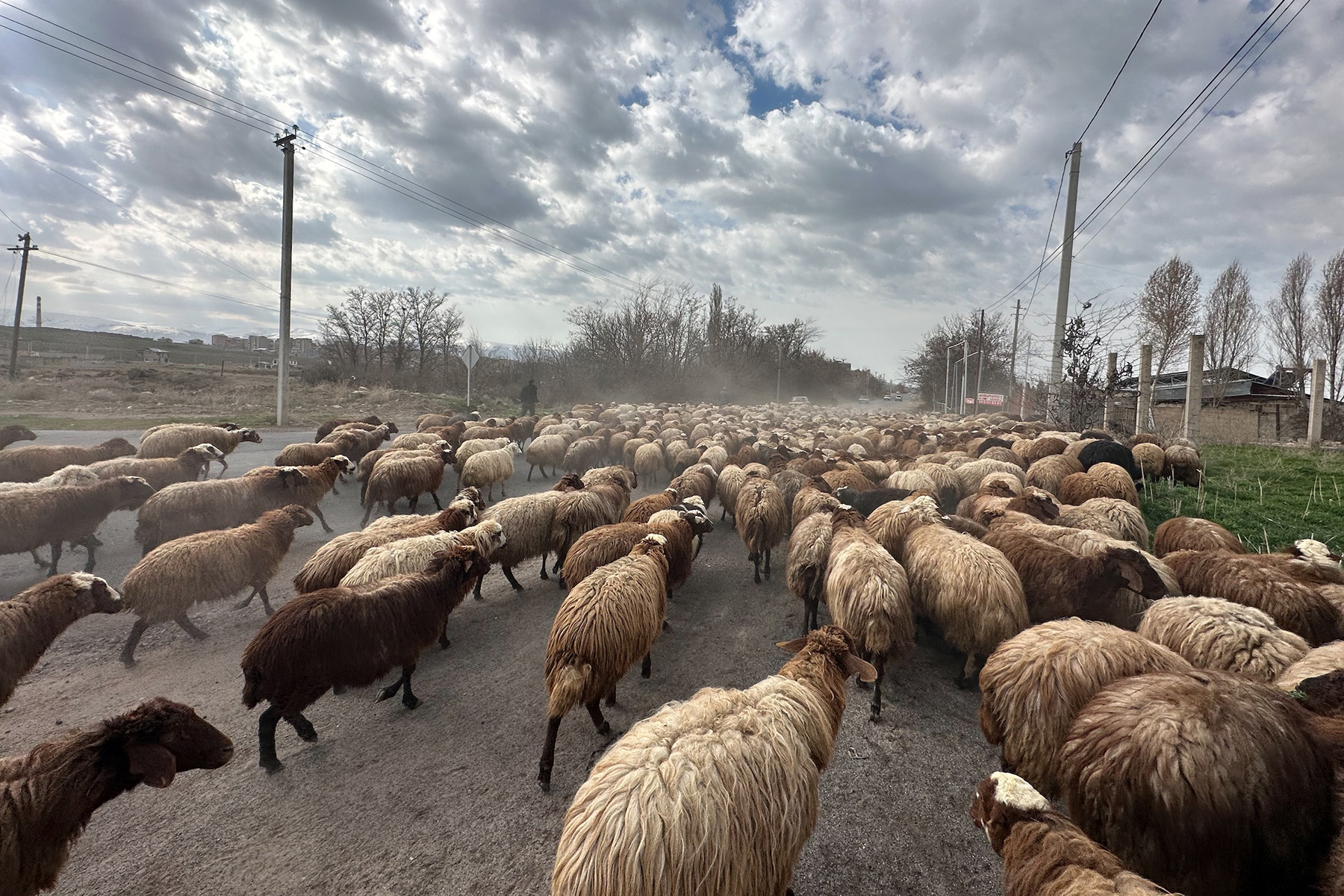
‘They give ֏50,000 [$130], and cause 50,000 pains at the same time. They help and persecute at the same time, as we Karabakh Armenians say, both “butter and pain”. I myself am attending a psychological programme organised by the Red Cross, but I realise that my disease is incurable. It feels like we’re stuck in a corked bottle where we can’t breathe, get out, or shout for help’, she said.
In September, an MP from the ruling party, Gagik Melkonyan, suggested that Nagorno-Karabakh Armenians had voluntarily given up their land, and that they should ‘conduct themselves as guests’ in Armenia.
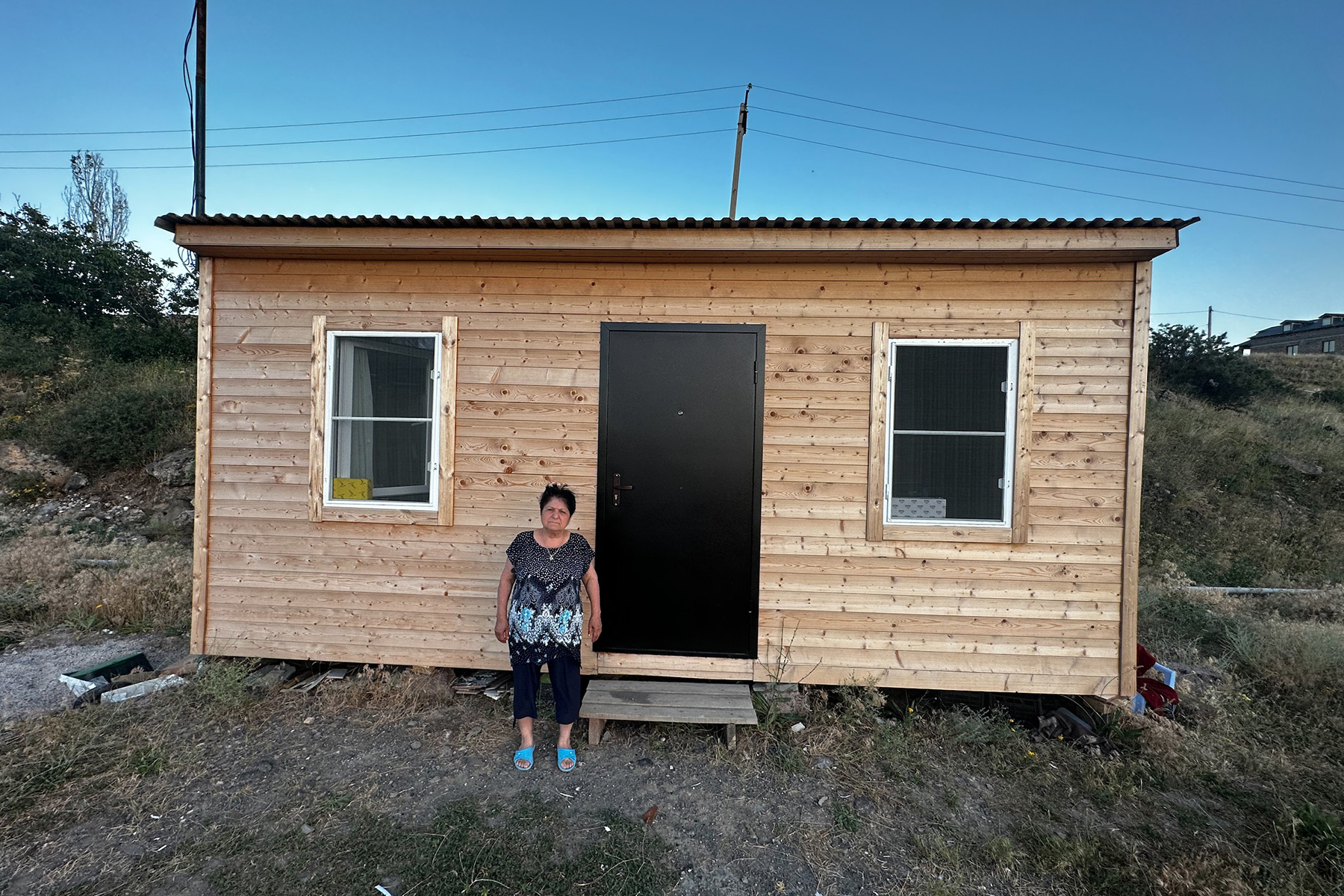
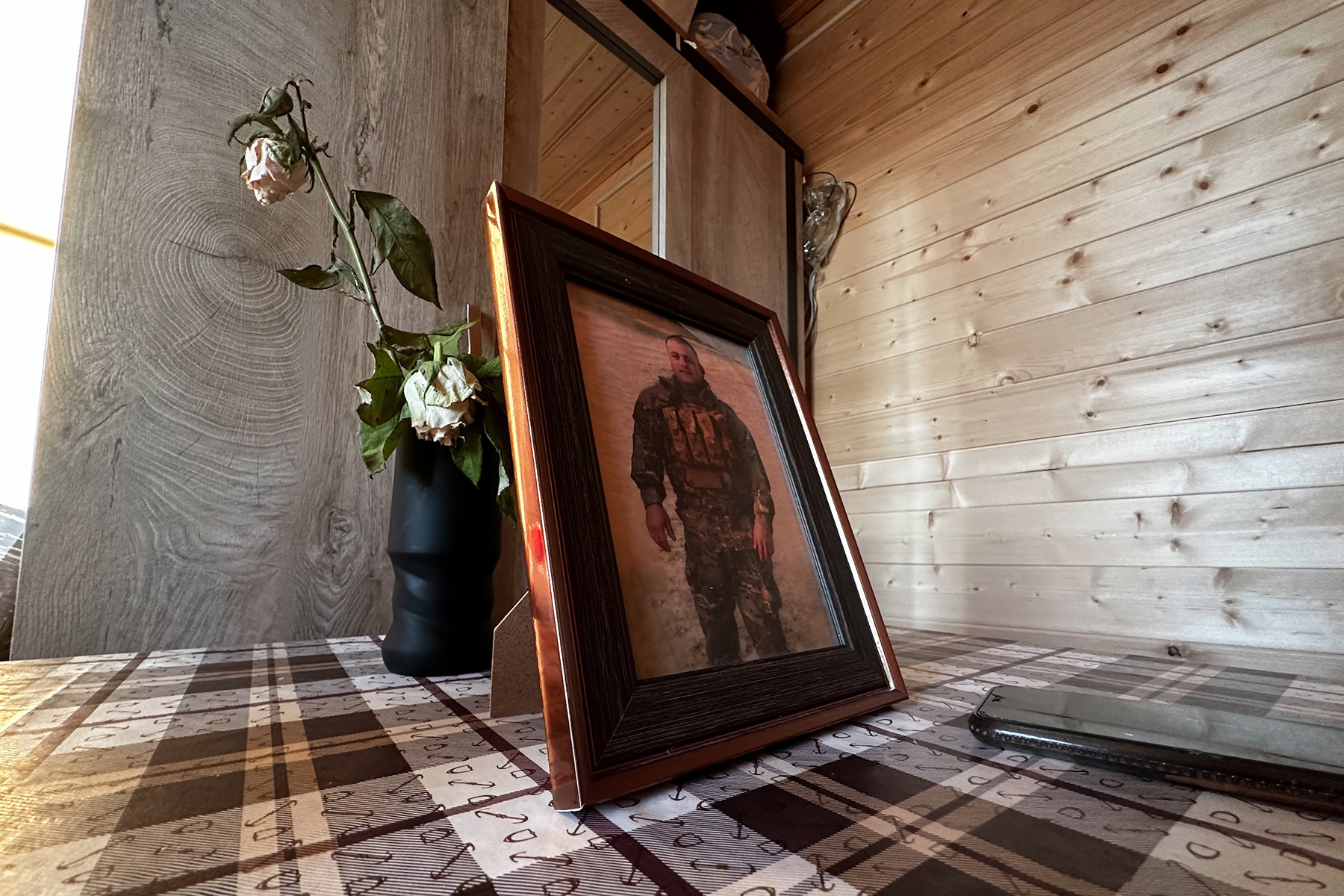
‘Yes, I am a guest here and I miss my home very much, I miss my son’s grave. I don’t know where to lay flowers on his birthday’, says Svetlana in response, adding that ‘it was a year of suffering.’
‘Physically I am here, but mentally [I am] in my home in Hadrut’.
However, Nagorno-Karabakh Armenians have had no choice but to wait. They have emigrated, watched online how their houseware was thrown out of their homes, seen how their former houses have become student dormitories, and have tried to assimilate in Armenia, all the while holding on to the faint hope that they might someday return.








